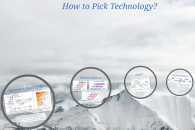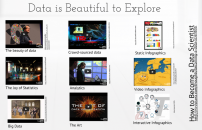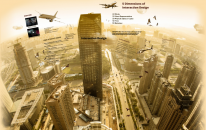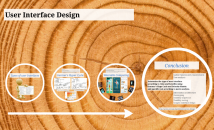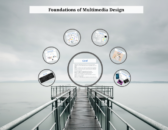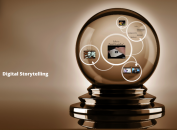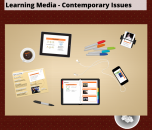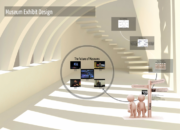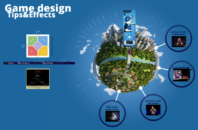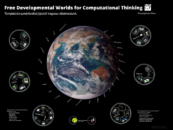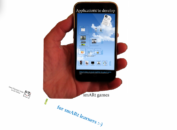Chapters
Scope
Definitions
One of the most important features in the 4G mobile networks is the domination of high-speed packet transmissions or burst traffic in the channels. The same codes used in the 2G–3G networks is applied to 4G mobile or wireless networks, the detection of very short bursts will be a serious problem due to their very poor partial correlation properties.
Many types of mobile operating systems (OS) are available for smartphones, including: Android, BlackBerry OS, webOS, iOS, Symbian, Windows Mobile Professional (touch screen), Windows Mobile Standard (non-touch screen), and Bada.
A mobile phone (also known as a cellular phone, cell phone, and a hand phone) is a device that can make and receive telephone calls over a radio link while moving around a wide geographic area. It does so by connecting to a cellular network provided by a mobile phone operator, allowing access to the public telephone network.
Near field communication (NFC) is a set of standards for smartphones and similar devices to establish radio communication with each other by touching them together or bringing them into proximity, usually no more than a few inches. Present and anticipated applications include contactless transactions, data exchange, and simplified setup of more complex communications such as Wi-Fi.
A sensor is a converter that measures a physical quantity and converts it into a signal which can be read by an observer or by an (today mostly electronic) instrument.
An accelerometer measures proper acceleration, which is the acceleration it experiences relative to freefall and is the acceleration felt by people and objects.
A gyroscope measures or maintains orientation, based on the principles of angular momentum.
A magnetometer measures the Earth’s magnetic field
A GPS navigation device is a device that receives Global Positioning System (GPS) signals to determine the device’s location on Earth. GPS devices provide latitude and longitude information, and some may also calculate altitude, although this is not considered sufficiently accurate or continuously available enough (due to the possibility of signal blockage and other factors) to rely on exclusively to pilot aircraft.
Instant messaging (IM) is a type of online chat which offers real-time text transmission over the Internet. A LAN messenger operates in a similar way over a local area network.
Mobile computing is human–computer interaction by which a computer is expected to be transported during normal usage. Mobile computing involves mobile communication, mobile hardware, and mobile software. Communication issues include ad hoc and infrastructure networks as well as communication properties, protocols, data formats and concrete technologies. Hardware includes mobile devices or device components. Mobile software deals with the characteristics and requirements of mobile applications.
A mobile application (or mobile app) is a software application designed to run on smartphones, tablet computers and other mobile devices. They are usually available through application distribution platforms, which are typically operated by the owner of the mobile operating system, such as the Apple App Store, Google Play, Windows Phone Store, and BlackBerry App World. Some apps are free, while others must be bought. Usually, they are downloaded from the platform to a target device, such as an iPhone, BlackBerry, Android phone or Windows Phone, but sometimes they can be downloaded to laptops or desktops.
Mobile application development is the process by which is developed for low-power handheld devices, such as personal digital assistants, enterprise digital assistants or mobile phones. These applications can be pre-installed on phones during manufacturing, downloaded by customers from various mobile software distribution platforms, or delivered as web applications using server-side or client-side processing (e.g. JavaScript) to provide an “application-like” experience within a Web browser.
In information technology, an application is a computer program designed to help people perform an activity. An application thus differs from an operating system (which runs a computer), a utility (which performs maintenance or general-purpose chores), and a programming tools (with which computer programs are created). Depending on the activity for which it was designed, an application can manipulate text, numbers, graphics, or a combination of these elements. Some application packages offer considerable computing power by focusing on a single task, such as word processing; others, called integrated software, offer somewhat less power but include several applications.
A programming tool or software development tool is a program or application that software developers use to create, debug, maintain, or otherwise support other programs and applications. The term usually refers to relatively simple programs, that can be combined together to accomplish a task, much as one might use multiple hand tools to fix a physical object.
A software development kit(SDK or “devkit“) is typically a set of software development tools that allows for the creation of applications for a certain software package, software framework, hardware platform, computer system, video game console, operating system, or similar development platform.
Integrated Development Environments combine the features of many tools into one package. They for example make it easier to do specific tasks, such as searching for content only in files in a particular project. IDEs may for example be used for development of enterprise-level applications. Different aspects of IDEs for specific programming languages can be found in this comparison of integrated development environments.
An application programming interface (API) specifies how some software components should interact with each other. In addition to accessing databases or computer hardware, such as hard disk drives or video cards, an API can be used to ease the work of programming graphical user interface components. In practice, many times an API comes in the form of a library that includes specifications for routines, data structures, object classes, and variables.
References: Definitions and links (unless otherwise indicated as “site” or “pdf”) are copied and edited from English Language Wikipedia as of 1st September 2013. Titles could be further explored through indicated links.
Research
Case-studies
Mobile Application Development: http://en.wikipedia.org/wiki/Mobile_application_development
Tips for developing mobile apps that users all love:
http://thenextweb.com/dd/2013/05/25/11-tips-for-developing-a-startup-mobile-app-users-love/
Android developers resources:
http://developer.android.com/training/index.html
http://www.bongizmo.com/blog/android-resources-each-developer-should-know/
iOS Developers resources:
https://developer.apple.com/devcenter/ios/index.action
https://developer.apple.com/resources/
http://www.davemark.com/?p=1829
Windows phone developers resources:
http://developer.windowsphone.com/en-us
http://www.geekchamp.com/resources
http://compiledexperience.com/blog/posts/essential-tools

